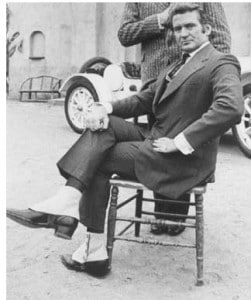Just as women were losing their touch on boots for everyday wear in the roaring twenties fashion, men also hopped in the trend. Alternatively, men replaced the boots for a comfortable pair of laced-up Oxford shoes. Besides that, other 1920s shoes were designed to mirror the comforting lifestyles of society.
In this article, we will discuss the various styles and fashion of footwear in the roaring twenties. We will first discuss the transformation from the conventional 1920s men’s boots, slowly evolving into more comfortable elements of clothing such as shoe spats and saddle shoes. We will also explore men’s’ role in house slippers, and how this aims to break the patriarchy and social hierarchy that existed during the 1920s. Fundamentally, we can witness that fashion for both men and women adopt similar styles – hence, enhancing the levels of equality and just how similar both men and women live during the roaring twenties. You can find a complete guide for 1920s men’s fashion in this link.
The roaring twenties also presented a platform for change and brevity. Although these styles of fashion only lasted for a good amount of time, the brevity of these fashions also enabled them to quickly subvert the purpose of these shoes to fit the climate and era.
1920 Mens Boots
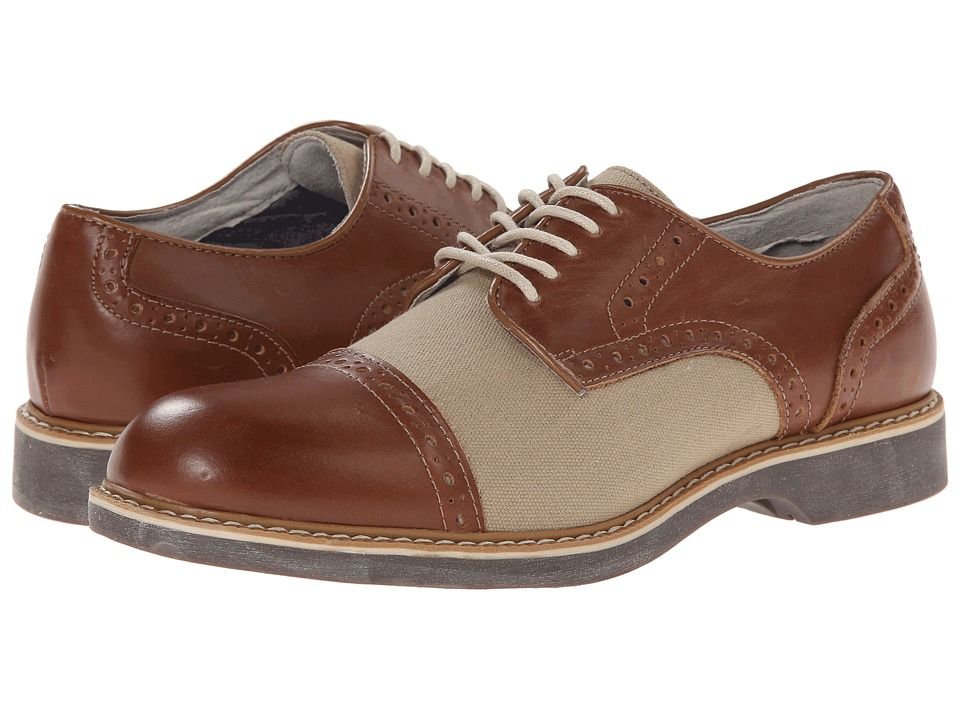
Men’s boots have been around for decades. This style has been around for more than 50 years. Not only does it look formal, but it was also comfortable. Working men usually adopted the style of men’s boots – quite frankly, they did not have an extensive collection of things to wear. Colors were made simple and formal – there was no room for creativity. Perhaps, the ideal footwear resembled the way of living – simple and purposeful. It served its purpose and that was the goal of the footwear.
The design of the boots mirrored comfort and exuded a look of professionalism. Some were fancy but most shoes were simple. Ultimately, it served its purpose and that was the end-goal. Working men wear boots when necessary. Although they were seen as more traditional or conservative. While working boots still remained, they took on new alternative styles and patterns which will be discussed throughout this article.
What are shoe spats?
Shoe spats were one item that made its way to the 1920s as strongly as before that resembled the comfort and style of most men during the roaring twenties.
However, white-wool or linen spats slowly became associated with gangsters. These movies portrayed men in those styles and were slowly adapted to their general stereotypes. This fed the stereotypes and they were slowly associated with the gangsters during the contemporary twenties.
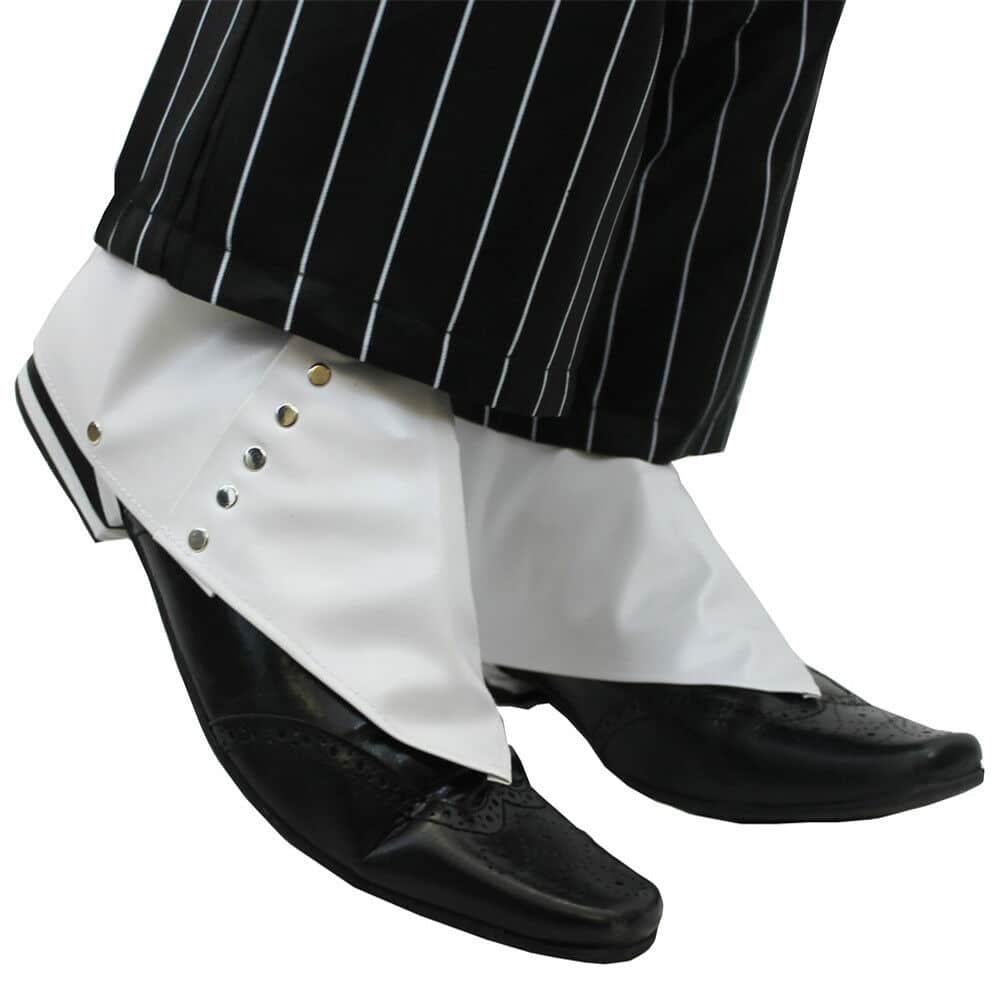
The stark transformation: 1920s oxford shoes
As mentioned previously, we have witnessed the gradual yet fast-paced transformation from boots to oxford shoes. Typically hidden under men’s trousers, it was relatively hard to see. New shades were introduced, but the conventional black, dark brown or red-brown was still common.
While older men appreciated roomy toes, the sharp pointed toe of the early twenties were replaced by wide box toe Oxfords. The shoes were heavy which greatly complemented the chunky Oxford bags.
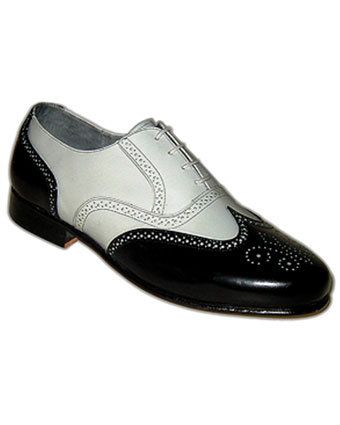
Traditionally, the shoe soles were made of leather, however, due to the praise of comfort and simplicity, rubber soles were implemented. This mirrored the contemporary way of thinking that resembled their style of living.
Most of the shoes during the early twenties were a bit plain. But the later twenties witnessed replicas of more patterns such as using reptile skins like alligator or reproducing similar patterns. Most men were not able to afford the real thing. They were able to reformulate and readopt their patterns based on the outlook that was possible. They made do with the resources they have – and quickly took up the trends they could. They made it possible with the slightest resources.
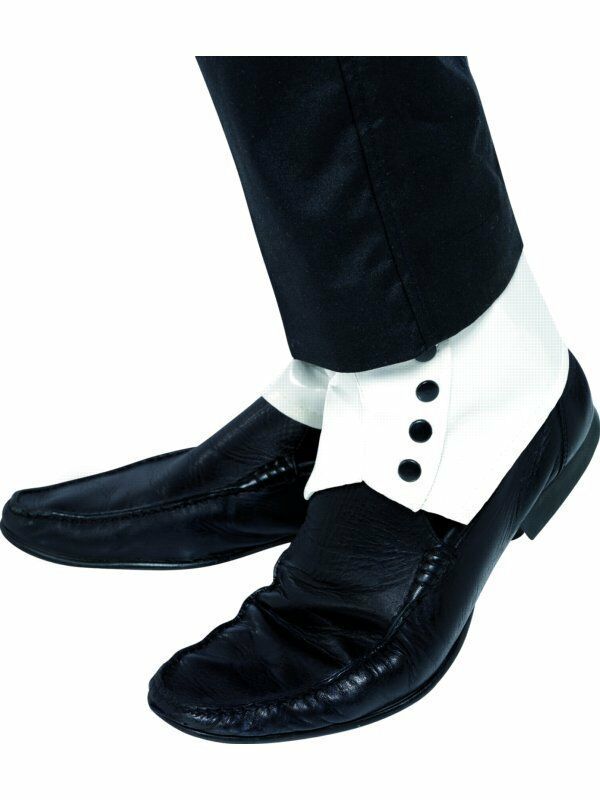
1920s Saddle shoes: was it available?
Saddle shoes were available in the 1920s but they did not become very trendy until the late 1930s. They were only a sports shoe and were not worn with casual or business attire.
Saddle shoes were usually associated with golf shoe designs. They started to have rubber soles instead of leather soles. These were early versions of cleats on both men and women fashion.
Although saddle shoes were not entirely trendy during the roaring twenties, they slowly transformed and gained leverage in the later twenties. More people slowly adapted to these styles of fashion and it became more conventional in its everyday styles.
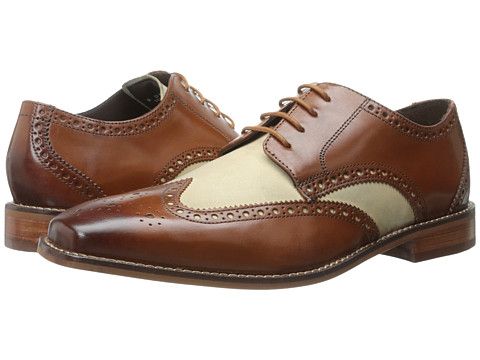
Leather boots
1920s Wingtip shoes: what were they?
Wingtip shoes are simply alternatives of Oxford shoes. It is similar to Oxford shoes but it has a slight subversion. The subversion resembled the wingtip design in the toe-area of Oxford shoes.
The W for wingtip came in a variety of designs. In general, the wingtip Oxford was more formal and worn during professional occasions – not for everyday working men. It resembled a more sophisticated style and design.
Alternatively, stitching designs were introduced to enhance the design and pattern of Oxford shoes: giving them a more sophisticated look as opposed to the traditional Oxford pairs. It was usually worn with suits in the roaring twenties or for special occasions!
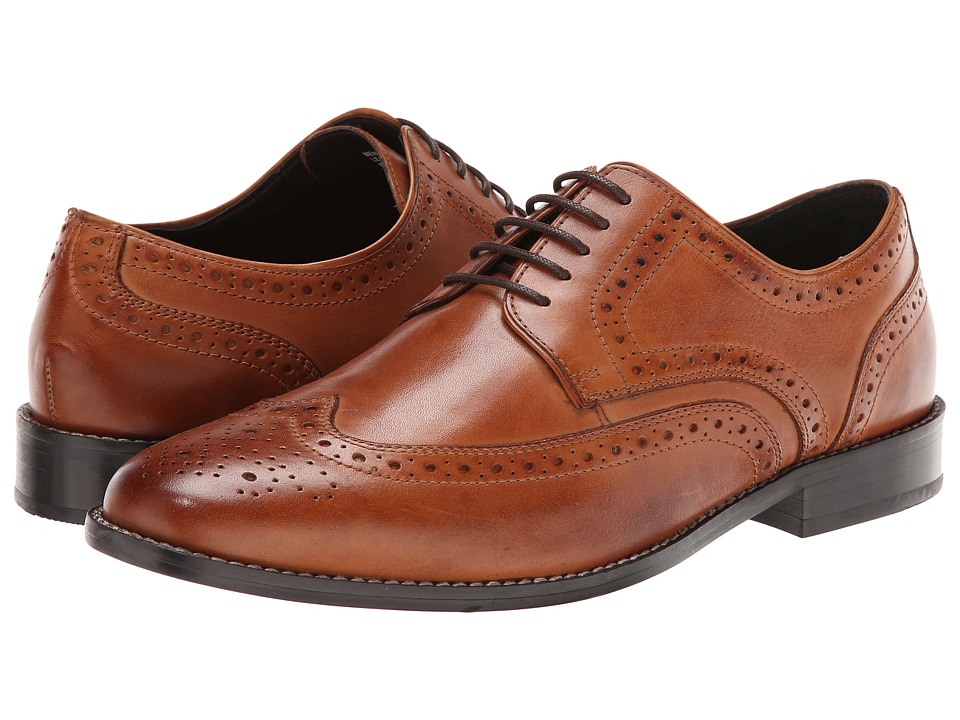
Were sport-shoes a thing in 1920s?
Sport shoes were both casual and semi-formal. It wasn’t exactly worn for sports, but it resembled a more toned-down fashion as opposed to the formality of conventional Oxford shoes.
The two-toned Oxford became a new type of fashion in the roaring twenties: incorporating both a casual and semi-formal look. It can be worn in various occasions that complement the popularity and fashion of the era.
Worn all year round, they were mostly available in solid, conventional colors: black, dark-brown, red-brown. It was a mix of canvas and leather and rubber soles for casual wear.
How about nubuck shoes?
Nubuck was the ‘wrong side of leather sanded into a velvet-like finish.’ They were extremely comfortable, which yet again, resembled the style and purpose of the roaring twenties: comfort and fashion.
They were typically worn during summer or winter – it was very versatile and worn by most. You can pair it with any outfit and the shoes resembled a style of its own. Other colors were available apart from white, but the popular color was white. They were also available in more eccentric colors such as red, green, or blue.
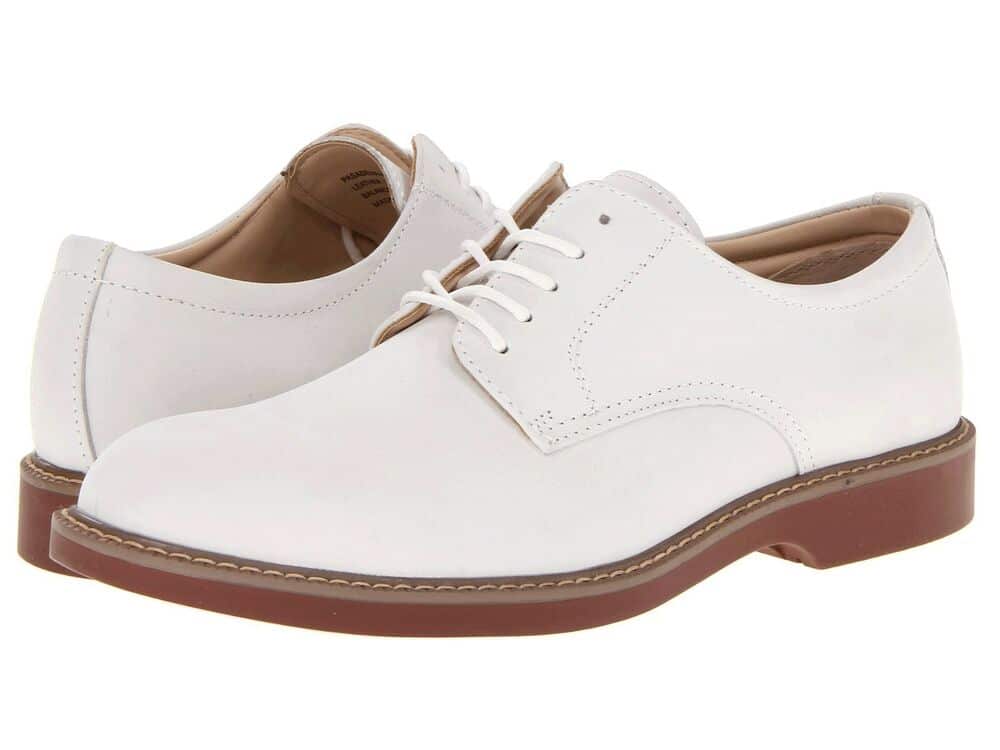
1920s nubuck shoes
Were tennis shoes adopted?
In 1917, the all-star-converse shoes were made as a popular and everyday tennis shoe look. The purpose of these shoes have obviously changed since the start of time. However, during the roaring twenties, it was associated as tennis shoes of the era. It was not only designed for tennis wear, but also adopted to the everyday fashion of the roaring twenties.
It has changed immensely since the roaring twenties.
The public caught on and soon many athletes and the general population were wearing ‘tennis shoes.’ These shoes had black or brown shoes that were generally very prominent. Dark leather and canvas edition was popular amongst the teens and working group of people. It resembled a casual yet fashionable style that was quickly adopted by the general population. Many fell in love with the newly aesthetic style of fashion that addressed both its comfort and fashionable fashion. These were prime goals that men of that era wanted. They were versatile as it could be worn for sports and both casual-wear.
Were working boots different from general boots?
For more hard-working laborers that needed to perform manual labor, they had a generally varied style of boots. Working men were also known to solely perform manual work, and this generally lasted for their entire lives. They were known just for their work ethics.
Besides the general roaring twenties style in boots, working men usually wore boots with thicker soles and wider toes with rounded extra toe caps.
During winter and colder seasons, boots were usually lined up with wool in the inner footwear that prevented their toes from freezing in temperate winter and for warmth. In severe weather, men’s winter books looked like working boots. They wore it throughout seasons and climates – through rain, snow and distress! During colder climates, they usually wore thicker socks and more layers.
How about house slippers?
As much as house slippers were worn by women at home, the patriarchy seems to be broken as men also adopt some of these general practices that women do. When work is done for the day, men usually switch into more comfortable elements of clothings.
Once the boots were taken off, house slippers became a piece of comfort that stitched the pieces together. Men’s house slippers came in many styles – I could even write about each of these house slippers in an entirely different article. However, it is important to simply note that house slippers came in various styles and fashion – it has an extensive collection that has to be praised and acknowledged.
1920s style men’s shoes today
Now that we have covered the history and fashion of mens 1920s shoes, we can take a look at the choices we have in contemporary today.
Even as shoes and different pieces of clothings in the 1920s have outgrown its fashion over the years, some pieces still remain timeless through the shift in time.
While in contemporary today, there may be alternative changes in the shoes during the roaring 1920s, some elements still remain similar, and the ambience of the shoes still resembles the history and cultural elements during the roaring twenties.
For instance, the tennis shoes of the roaring twenties have adopted and shifted its fashion to general converse sneakers of today.
The Oxford shoes however, still remains timeless over the shift in time: there are still an extensive collection of wingtip shoes, two-toned shoes, cap toes shoes, nubuck whites and lace up boots. The collection is simply extensive!
Even though it may be difficult to find the exact pair and copy of shoes from the roaring twenties, it is certainly possible to find knock-offs of the same pairs.
Styling 101: Peaky Blinders Boots
For instance, men’s style shoes came in black, red-brown or dark-brown colors.
The Oxford shoes however, still remains timeless over the shift in time: there are still an extensive collection of wingtip shoes, two-toned shoes, cap toes shoes, nubuck whites and lace up boots. The collection is simply extensive!
The Great Gatsby however, has brought back the trend of two tone 1920s shoes. You can get the Great Gatsby, Peaky Blinders, Boardwalk Empire, gangster or Downton Abbey gentleman’s look with these new 1920s style men’s shoes and boots we found online (especially in the sites that we’ve introduced previously).
Even though it may be difficult to find the exact pair and copy of shoes from the roaring twenties, it is certainly possible to find knock-offs of the same pairs that will resemble exactly the same, identical style and pattern.
Buying 1920s style men’s shoes:
A lot of sites offer extensive collection of men’s shoes during the roaring twenties.
I found that Amazon.com has styles and patterns that almost identically resembles the shoes in the roaring twenties: such as the classic wingtip shoes, two-toned shoes, cap toes shoes, nubuck whites and lace up boots. There are certainly other alternatives that are available and incorporated.
Conclusion
In this article, we have discussed the transformation of conventional working boots to Oxfords in the roaring twenties. Not only did the style of shoe change, there was more involvement in different colors and patterns in the shoes itself that resembled the shift in sense of fashion of most individuals.
Although these shoes were very popular during its fair share of time in the roaring twenties, it still gains leverage even after the shift in time, even throughout the years. We can still witness the importance of these shoes even throughout the shift in times.
As discussed, the roaring twenties also presented a platform for change and brevity. Although these styles of fashion only lasted for a good amount of time, the brevity of these fashions also enabled them to quickly subvert the purpose of these shoes to fit the climate and era.
